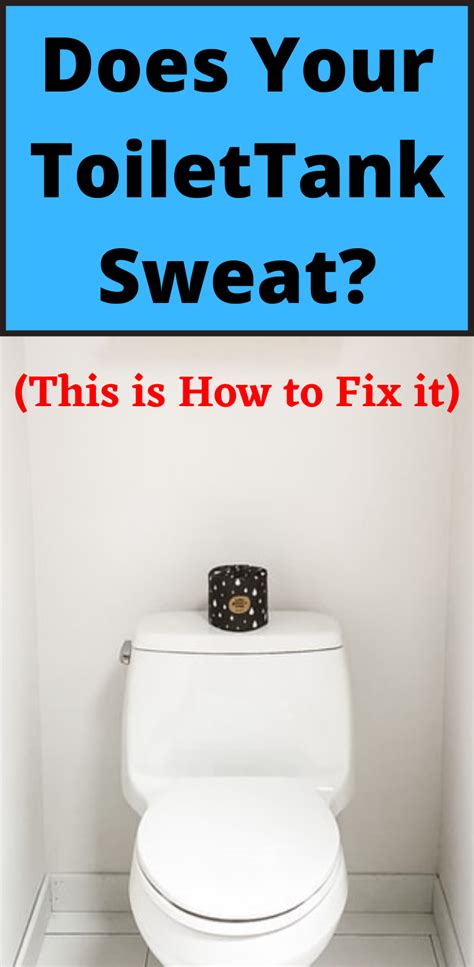The #1 Way to Stop Toilet Sweat Quickly: Understanding and Addressing the Problem
Toilet sweat, that uncomfortable dampness around the toilet bowl, is a surprisingly common problem. It's not just unsightly; it can also be a breeding ground for bacteria and mold, potentially impacting your bathroom's hygiene and even your health. While various solutions exist, the #1 way to stop toilet sweat quickly and effectively is to address the root cause: condensation.
This article will explore the science behind toilet sweat, discuss common misconceptions, and provide practical, effective solutions to keep your toilet dry and your bathroom fresh.
Why Does My Toilet Sweat?
The formation of condensation on your toilet is a simple physics problem: warm, moist air comes into contact with a cold surface. Your toilet bowl, especially in colder climates or after flushing with cold water, is often significantly cooler than the surrounding air. The warm, humid air in your bathroom then deposits its moisture onto the cool toilet surface as condensation. This is especially noticeable in poorly ventilated bathrooms.
Misconceptions About Toilet Sweat
Before we delve into solutions, let's address some common misconceptions:
- It's a sign of a plumbing problem: While leaks can contribute to excess moisture, toilet sweat itself is primarily caused by condensation, not a plumbing issue.
- Cleaning it frequently will solve the problem: While regular cleaning is essential for hygiene, it only addresses the symptom, not the cause. The condensation will simply reappear.
- It's only a problem in old homes: Condensation can occur in bathrooms of any age, especially those with poor ventilation.
How to Stop Toilet Sweat Quickly: The Top Solutions
Now, let's address the core issue of condensation. Here’s a breakdown of effective strategies:
1. Improve Bathroom Ventilation: The #1 Solution
This is the most effective long-term solution. Good ventilation reduces humidity levels, minimizing the amount of moisture available to condense on the toilet.
- Exhaust fan: Ensure your bathroom exhaust fan is working correctly and use it every time you shower or bathe. Run it for at least 30 minutes after showering to remove excess moisture.
- Open a window: If possible, open a window to create natural ventilation, particularly after showering or bathing.
- Consider a dehumidifier: In humid climates or bathrooms with limited ventilation, a dehumidifier can significantly reduce moisture levels.
2. Increase Toilet Temperature: A Secondary Approach
While improving ventilation is paramount, you can also try to minimize the temperature difference between the air and the toilet.
- Warm water flushing: Using warm water instead of cold can slightly reduce the temperature difference, lessening condensation. However, this isn't a primary solution and may not be effective in all situations.
3. Regularly Clean the Toilet: Maintaining Hygiene
While not a solution to the condensation itself, regular cleaning prevents the build-up of bacteria and mold that thrive in moist environments. Use a suitable toilet cleaner to keep your toilet hygienic.
4. Addressing Underlying Issues (Leaks)
If you suspect a leak, it’s crucial to address it promptly. A persistent leak will exacerbate the problem and could lead to more serious issues. Call a plumber if you notice any signs of water damage or unusual water usage.
Frequently Asked Questions (PAAs)
Here are some frequently asked questions related to toilet sweat:
How can I prevent mold growth on a sweaty toilet?
The best way to prevent mold growth is by tackling the root cause: condensation. Improve ventilation and regularly clean your toilet with a suitable cleaner. Pay close attention to the areas where condensation tends to accumulate.
Why is my toilet sweating more in the winter?
Colder winter air holds less moisture, but the temperature difference between the cold toilet and the warmer indoor air is often greater in winter, leading to increased condensation.
Is toilet sweat harmful?
While toilet sweat itself isn't directly harmful, the dampness can create an ideal breeding ground for mold and bacteria, which can be detrimental to your health. Regular cleaning and improved ventilation are crucial to prevent this.
Can I use a fan to dry the toilet?
While a fan might seem like a quick fix, it only addresses the symptom, not the cause. A fan alone won't significantly reduce the humidity and may even worsen the problem if it's not properly vented to the outside.
By focusing on improved ventilation and addressing any underlying plumbing problems, you can effectively eliminate toilet sweat and maintain a clean, healthy bathroom. Remember, the key is to address the cause, not just the symptom!

